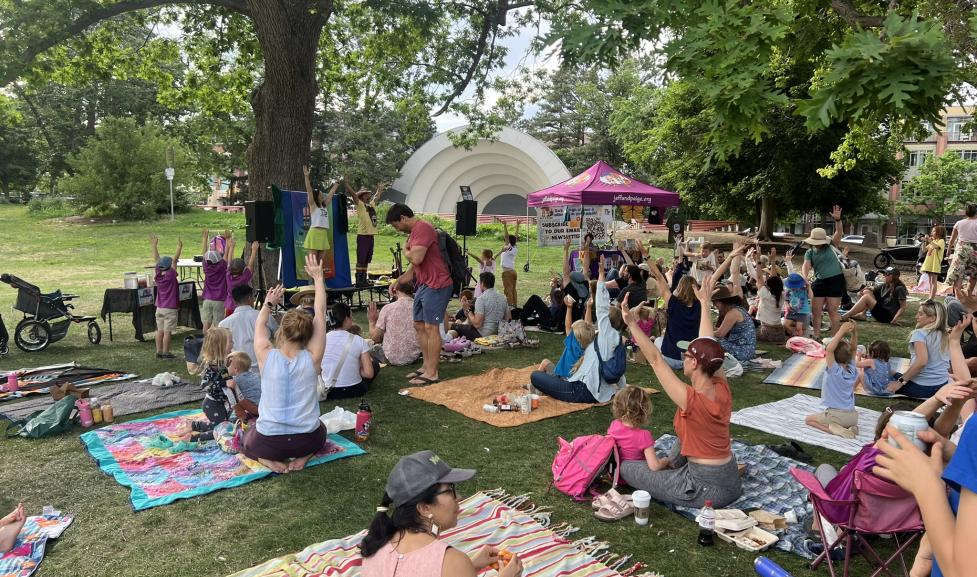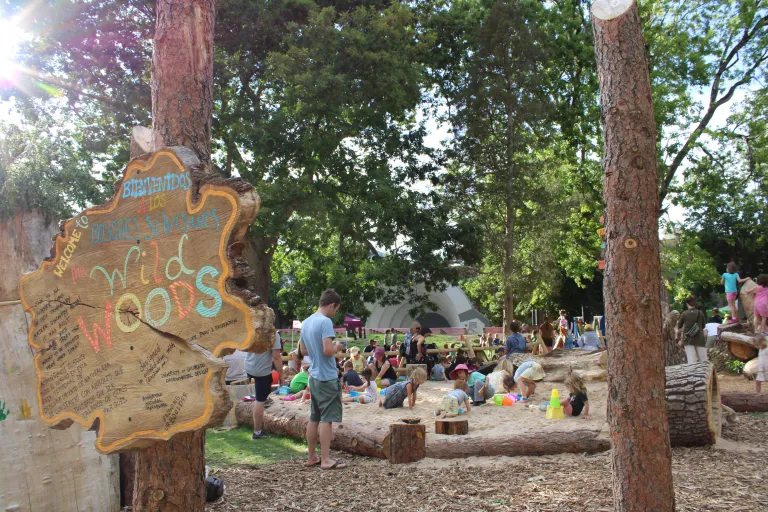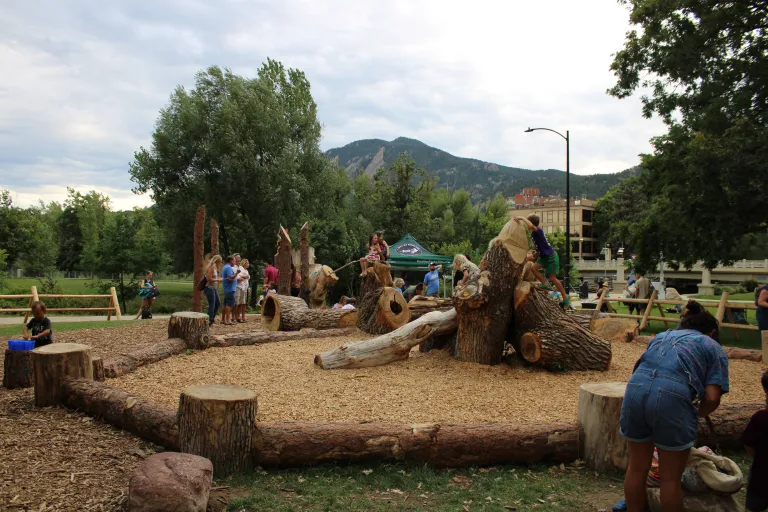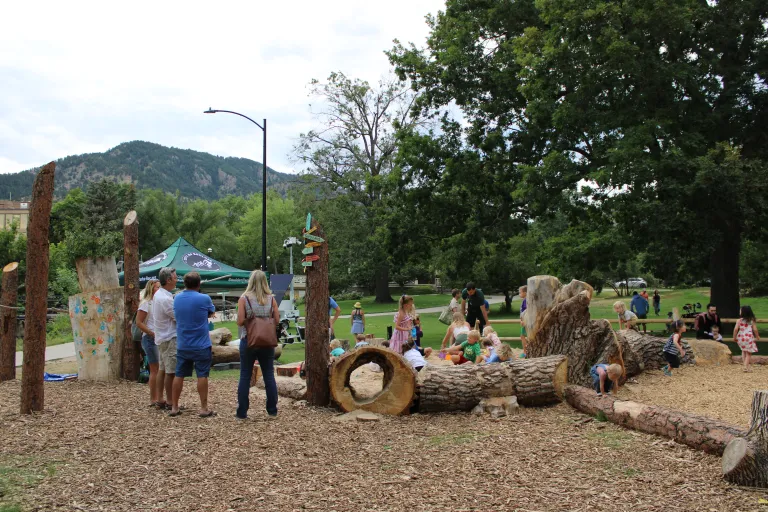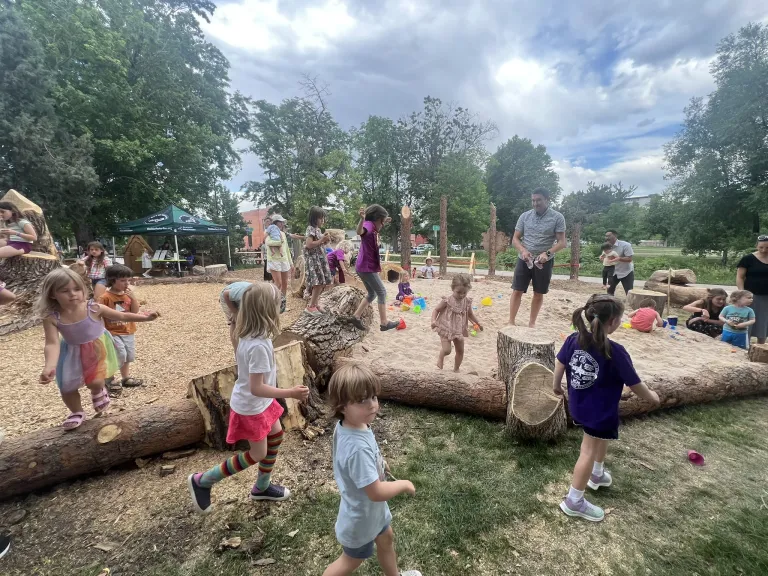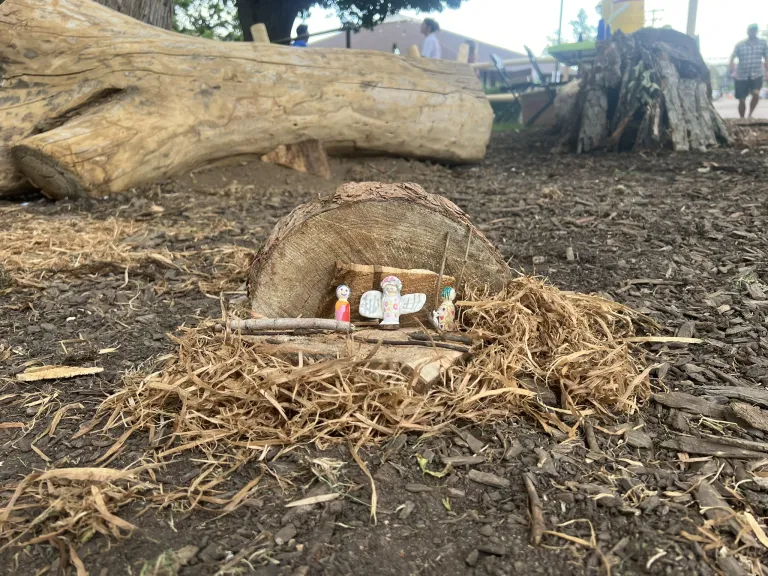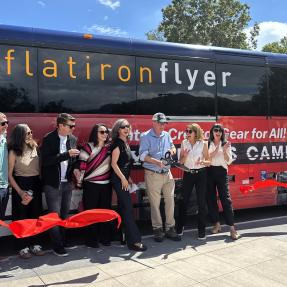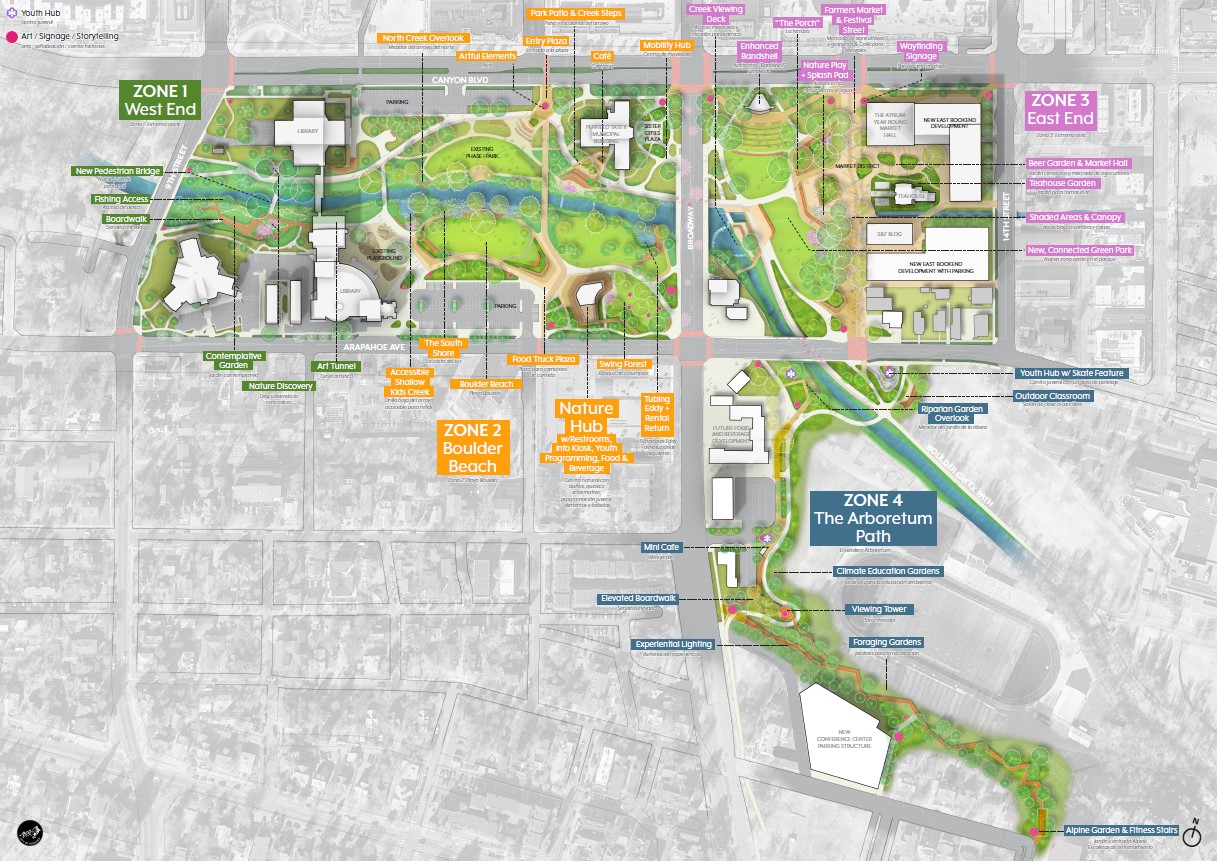
The City of Boulder is committed to digital accessibility. Some content may not be fully accessible due to technical limitations or issues. For alternate formats or accommodations, please contact 303-413-7200 x5 or accessibility@bouldercolorado.gov.
-
Plan
2023 - 2024
-
Community Engagement
Late 2024
-
Design
2025 - 2026
-
Build
2027-2028
Concept Plan and Community Feedback
The Civic Area concept plan includes the most popular elements chosen based on community feedback over the past year and a half. Thank you to everyone who provided feedback on the concept plan from July 14 - August 11. You can view what the community loved most about the concept plan at our Engagement Summaries page -- this feedback will help inform what elements from the concept plan will advance into detailed design and construction.
Project Overview
The Civic Area Phase 2 Project is building on the 2015 Park Plan, continuing the transformation of this important public space into a vibrant hub of urban life, cultural events, and natural connections—while honoring the full history of the area and serving the Boulder community.
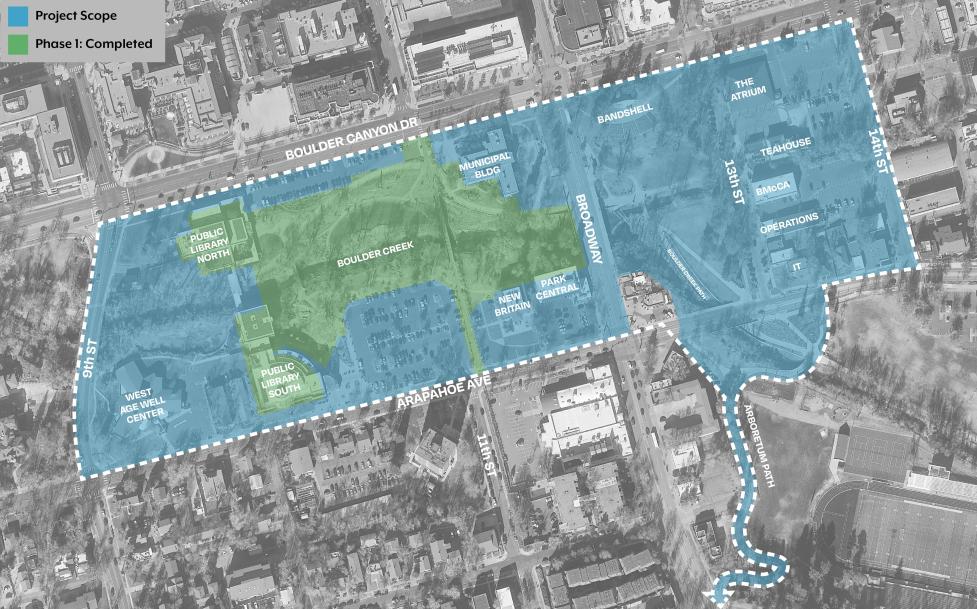
Project Updates
- Based on community feedback, the project team is working to define which features from the Civic Area concept design will be built under the project budget in 2027.
- The team is progressing through governance studies to identify how best to activate and manage the space in the future.
- The team is finalizing reprogramming and use studies to progress urban development in the East End of Civic Area.
- In August 2025, the project team completed Engagement Window 3, bringing family-friendly activities and the Wild Woods temporary nature discovery area to the park space and asking the community to vote on their favorite features shown in the concept design.
- In December 2024, the project team completed Engagement Window 2, finished the Planning Analysis phase, and published a project milestone report.
- In spring of 2024, the project team completed Engagement Window 1.
Wild Woods Nature Discovery Area in Central Park
This temporary nature discovery area was installed in the park space along 13th street in collaboration with the CU Environmental Design program using local recycled wood.
Project Timeline
2023: Scoping, Project Management
2024: Planning Analysis, Engagement Windows 1 and 2
2025: Concept & Schematic Design, Space Activation and Governance Plan, Engagement Windows 3 and 4
2026: Design Development, Space Activation and Governance Plan, Construction Documentation
2027: Construction, Space Activation and Governance Plan, Park Opening
- Upcoming - Summer 2025: Engagement Window 3 opens. The community will give feedback on the concept design.
- January 2025: Project team completes planning analysis and begins concept and schematic design. Project team analyzes public feedback from Window 2 to inform concept design. View project milestone report here.
- Fall 2024: Window 2 of public engagement runs from October - December to confirm what we heard from the community in Window 1.
- May 2024: Project team analyzes public feedback and the design team conducts ongoing technical studies.
- May 6, 2024: Window 1 of public engagement closes.
- February 2024: The city holds a project kickoff meeting with the consultant, Rios, to officially begin the project's planning and analysis phase.
- February 22, 2024: Window 1 of public engagement opens and the City collects feedback from the community on existing park features and what they would like to see and do in the future park.
- January 22, 2024: The Cultural Landscape Assessment (CLA) and the Proposed Civic Area Historic District were presented to and discussed by the Parks and Recreation Advisory Board (PRAB).
- January 2024: The final contract and scoping for the project were completed and Rios was selected as the design consultant.
- September 2023: The City of Boulder Interviewed design teams to assist with the project.
- July 17, 2023: After final scoping of the project had been completed, the City released a Request for Proposal to solicit a design team in support of the planning, design and public engagement work needed to complete the Civic Area’s Schematic Design.
- July 12, 2023: The Landmarks Board voted to initiate the designation process for the Historic District as outlined by the application.
- May 2023: An application for a Historic District was submitted by three community groups.
- January 2023: The City of Boulder launched the Phase 2 Civic Area project. This process will build on the rigorous effort of the planning process and Phase 1 park improvements, completed in 2018. Staff have conducted scoping and pre-planning, and outlined a public engagement strategy to take the Civic Area Plan from Concept Design to Schematic Design.
As part of the research process for the proposed Civic Area Historic District, the Parks and Recreation Department conducted a Cultural Landscape Assessment (CLA) to evaluate park land as part of the proposed historic district. The CLA is focused on Central Park (including the currently designated bandshell) to ensure there is a solid base of knowledge regarding the historic significance and integrity of the parkland. The CLA and the Proposed Civic Area Historic District were presented to and discussed by the Parks and Recreation Advisory Board (PRAB) on Jan. 22, 2024.
- Proposed Civic Area Historic District Memo (starts on page 13)
- Central Park Cultural Landscape Assessment Memo (memo starts on page 72)
- Central Park Cultural Landscape Assessment (Full Report starts on page 76)
PRAB Presentation and Discussion:
- Central Park Cultural Landscape Assessment Presentation @ 8:40
- Proposed Civic Area Historic District Presentation @ 29:50
- Recommendations from PRAB @ 1:18:35
- Board Vice Chair’s Statement, as referred to in the recommendations @ 1:06:30
Boulder has routinely been named one of the top places in America to call home, and in keeping with this charge, Phase 2 of the Civic Area Project is critical to maintaining this way of life. We have the opportunity at the heart of downtown to rethink urban park design to ensure a strong connection to nature, promote the robust local economy, support the dynamic art scene, and continue to cultivate Boulder’s thriving culture.
The project vision encompasses the makings of a beautiful recreational river park at the core, with incredible views of the celebrated Flatirons. This area is flanked by bookends that can entertain civic and commercial development that are alive with activity, collaboration, and innovation.
This will be a space for everyone - a lively and distinct destination that reflects the principles laid on in the 2015 Civic Area plan. A place where people of all ages, abilities, backgrounds, and incomes feel welcome to recreate, socialize, relax, and enjoy the ambiance of a high-altitude urban center at the feet of the Rocky Mountains. The green ribbon along Boulder Creek is the unifying design that will weave metropolitan and park space into a richly diverse, sustainable, equitable, resilient, communal, recreational, artistic, historic, cultural, educational, and social gathering space that reflects Boulder’s identity as a funky, fun and friendly place to live.
This project will also focus on how this vital downtown area can connect to the university on the ‘hill’. The Civic Area will also potentially see city-owned buildings become available as city staff move to a new location. This allows us to reimagine the reuse of these assets to create centers where community members can meet, interact, and innovate. All together, these elements create a true civic heart for the Boulder community, a place to tell, enjoy, and participate in Boulder’s story.
The planning process for Boulder’s Downtown Civic Area kicked off in 2012 with the initial Plan for Boulder’s Civic Area, adopted by Council in September 2013. This document provided a high-level vision with design principles for Civic Park, Central Park, 13th Street, East Bookend, West Bookend, Pearl Street, the Arboretum Path, and major pedestrian connections between these spaces. In 2015, City Council approved Boulder’s Civic Area Plan, refining the initial thinking with an updated concept and program plan. Throughout these two key efforts, a robust public engagement, stakeholder, and steering committee process was incorporated into the overall project timeline to ensure the proposed Civic Area enhancements reflected the values and goals of the community.
The 2015 Civic Area Plan PDF and resulting redevelopment efforts seek to breathe new life into some of Boulder’s most beloved, historic, and iconic public spaces. With parts of Phase 1 (as outlined in the 2015 plan) completed in 2018, Phase 2 of this project will review Civic Park, Central Park, the Arboretum Path, 13th Street, and the West and East Bookends. They will also review multiple city-owned buildings as key components to understand future land use, development opportunities, and which park spaces will move forward for the next phase of implementation. The outcome of the project is to lay out a dynamic, connected, and vibrant collection of community spaces enjoyed by residents and visitors in the Civic Area, guided by the seven main principles from the Civic Area Plan PDF:
Main design priorities:
- The Civic Heart of Boulder
- Life & Property Safety
- Outdoor Culture & Nature
- Celebration of History & Assets
- Enhanced Access & Connections
- Place for Community Activity & Arts
- Sustainable & Viable Future
Community Connectors
City staff are partnering with a community connector for this project to have conversations with a diverse set of neighbors that represent communities with disabilities, multi-generational groups, and neighbors passionate about bringing equity to Boulder.

Claudia Sanchez was born in Guadalajara, Mexico and has lived in Boulder for 25 years, including 20 years in downtown Boulder. Claudia works as a systemic change organizer for the Colorado Statewide Parent Coalition. She has always tried to be an inspiration of strength to the community by helping and sharing her leadership skills in collaborative ways. She enjoys spending time with her family and celebrating all that can be celebrated. All three of her children have attended Boulder High School, which is her alma mater.
Adriana Paola Palacios Luna
I am founder of Luna Cultura and a Mexican Mestiza woman from Cuetlaxcoapan, currently known as Puebla, Mexico. I have worked for more than 28 years on socio-environmental justice and social change projects. My participatory research approach is Communication for Social Change, Sociology of Culture, Gender Equity, women and gender studies, Human Rights, Art, Culture, and Identity. Culture and Alternatives Building. Participatory planning for social change.
As an artist, I am a poet, short story writer, storyteller, textile artist, and explorer in the Maker movement.
Honored by the Boulder Chamber in 2022, as a “Woman Who Lights the Community“.
Feature by the City of Boulder at Celebrating the Boulder Women Who Tell Our Stories
